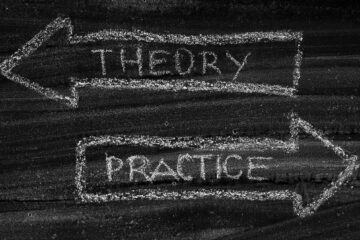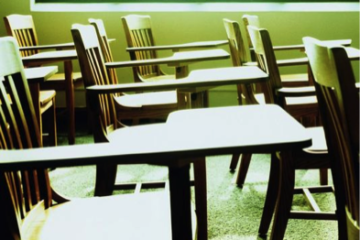Could Hubris Be the Reason U.S. Schools And Our Pandemic Response Lag So Far Behind?
 For those of us whose focus is on schools and education, the way the world is learning to cope with COVID-19 should be, shall we say, instructive. The news is full of graphs showing changes in the number of infections and deaths over time, in raw numbers and moving averages. The hosts of TV and cable news programs call our attention to big differences among the states and nations in the shapes of the curves. They ask experts to comment on those differences in outcomes over time by describing the differences in the strategies pursued by the governments to address the pandemic. They interview officials in those countries who, when asked how they came up with those strategies say, in effect, that they have been learning from the expert researchers in the relevant fields who have been closely observing the experiences of other countries as they, too, have been dealing with the same enemy, trying to understand what has worked, what has not and why.
For those of us whose focus is on schools and education, the way the world is learning to cope with COVID-19 should be, shall we say, instructive. The news is full of graphs showing changes in the number of infections and deaths over time, in raw numbers and moving averages. The hosts of TV and cable news programs call our attention to big differences among the states and nations in the shapes of the curves. They ask experts to comment on those differences in outcomes over time by describing the differences in the strategies pursued by the governments to address the pandemic. They interview officials in those countries who, when asked how they came up with those strategies say, in effect, that they have been learning from the expert researchers in the relevant fields who have been closely observing the experiences of other countries as they, too, have been dealing with the same enemy, trying to understand what has worked, what has not and why.
We have in this way been introduced to a massive global exercise in the value of comparative research. It is literally a deadly serious game. Massive national bets are being made with people’s lives at stake. The scientists keep saying that there is a great deal they do not know about the mechanisms and behavior of the virus. So, there is a lot of uncertainty about what will work and what will not work. Science is about coming up with effective theories that can guide practice. Effective theories are theories with great predictive power. The kind of predictive power that says, if you do this, that will happen.
In education, we have largely adopted a medical model of research. The aim has been to be able to say, for example, this method of teaching reading will reliably result in students learning how to read, just as a medical researcher would want to say that these drugs are highly likely to cure this disease under these conditions. To make sure that it really is that method of teaching that does it and not something else, we, like the medical researchers, try to statistically eliminate the possibility that anything else could account for the result we are looking for. That is very hard to do. The best way to do it is to randomly assign the treatment to the students who will get it and those who don’t and not let anyone know which is which.
Imagine that we tried to do that with COVID-19. It is what we will do with candidate vaccines, when we get them. But, without vaccines that work, countries have to have multi-pronged strategies for controlling the spread of the virus. That involves complex changes in people’s behavior on a grand scale. We would have to randomly assign the population of Taiwan, let’s say, to the whole complex of strategies being used by, say, ten other countries. Well, that is out of the question. Disappointed, we would then, with regret, use what we call quasi-experimental methods. Here, instead of moving the populations of entire countries around or randomly assigning the strategies used by a variety of countries to citizens in a given country—both obviously impossible—we would try to set up control groups alongside the groups that are given ‘the treatment.’ Well, that won’t work either in this case, because it is simply impossible to replicate the public health systems and strategies for dealing with COVID-19 used by a variety of countries in one country, along with control groups, in order to study the effects using the methods usually used in education research.
As I said above, the kind of clinical methods I have just described will in fact be used for testing the vaccines as they are developed. There the analogy works well. That’s because vaccines and treatments do or don’t work on individuals. But pandemics operate on large populations, as do the effects of public health systems and strategies for dealing with the virus. Vaccines are fully formulated. They either are the vaccine or they are not. They are either administered correctly or not. They will work under certain carefully specified conditions but there is no guarantee that they will do so under other conditions.
National strategies for fighting the virus cannot be specified like that. They are complex, frequently changing over time and from place to place and framed to depend on local context, which depends on culture, institutional capacity and political considerations, all of which can vary from place to place. It is difficult if not impossible to say with any precision which parts of which strategies were most important in determining the observed outcomes. And there is no way to administer ‘the strategy’ to some parts of a country while denying them to a ‘control group.’
By the standards of educational research, it should be virtually impossible to learn anything useful by comparing strategies used in one country to strategies being used by another one.
But we are all glued to our TV screens and our computer monitors because it is obvious to the people who made those news programs and to us—and, by the way, to our medical experts— that we have everything to learn from these comparisons. One set of charts is all it takes for us to see that the virus is under control in Europe and out of control in the United States. When we are given data about which countries locked down early and which did not, we can see the results in the charts. When we are told which countries practiced widespread testing, contact tracing and isolation, we can see the results in the charts. When, in the United States, we can see which states relaxed their lockdowns before they were well down the slope toward zero deaths, we can see the results in the charts. No two countries did all this the same way and most countries made changes in their strategies as they proceeded, so there is no single precisely defined ‘treatment’ for a country suffering from the pandemic to copy, but it turns out not to be very hard to identify a set of principles that have governed the behavior of countries that have managed to control the virus and its effects.
It is very important to understand that we would have virtually none of that knowledge if we had the relevant information from only one country. What gives us confidence that humanity is learning something is our ability to analyze the data across countries, so we can see the patterns that emerge. We can see how certain combinations of strategies work better than others. We can see how the effectiveness of certain strategies is affected by different cultures, the variances in capacity of different public health systems, different governmental systems, different levels of expenditure, different politics. When we see the same results from similar patterns of conditions such as these, we can form theories that are then tested when the next set of countries gets the virus and they try out their own combination of strategies, the rest of us can use the results to modify our theories and improve our responses.
Except, of course, for the United States. While many of us have grown used to looking at the comparisons of one country to the next, our national government has largely chosen to go its own way, with little apparent interest in learning from others. You will say, well, that is not our government; it is our President. But that, unfortunately, is not true. When the pandemic began, our public health officials were very slow to recognize the danger. When they did recognize the danger, they insisted on developing their own tests even though perfectly good tests were available from other countries and the tests did not work. We turned out to have an inadequate supply of personal protective equipment (PPE) and a chaotic, clumsy system for distribution of supplies and data. Our whole public health system turned out to have been hollowed out over the years, underfunded, understaffed, fractionated and very poorly coordinated. The contrast between the weakness of our public health system and the strength of those of the countries that are now in much better shape with respect to the virus is striking. What is especially striking is the contrast between the global reputation of our public health system prior to this virus and its performance in this pandemic.
Which brings me to public education in the United States and to the parallels with our public health system as I have described them. The parallels are striking.
While some states have paid attention to the experiences of other nations with the coronavirus and profited from that knowledge, the actions of the federal government and those of many states have reflected a deadly combination of hubris and willful ignorance of others’ experience. The result has been that the U.S. is now among the highest in the world in the proportion of its population that has the virus and is dying from it.
Our record in education tracks our record in public health with precision. Here, too, the United States stands apart from almost all the other leading industrial nations both on the performance of its students and its interest in learning from the world’s leaders. American pride is matched only by American hubris in both arenas.
Yes, it is true that people have long come from all over the world to learn from American schools. But what they have come to see is the very best of our schools. Most know that the vast majority of our state education systems produce results far inferior to most of their own. This is like coming to the United States to visit the best of our university hospitals and most advanced laboratories, knowing that our public health system is far behind their own. Both our education and our public health systems were once the best in the world. Now that is true of neither.
I’ve made the case about research. The U.S. has the biggest education research establishment in the world. But there are many other countries that have well-organized units in their ministries of education whose only job is to benchmark other countries’ education systems, not once, but constantly, using the comparative research methods I described above. Because these units are in the ministries of education, their research reports are routinely used to make policy, with the result that these countries are constantly updating their policies and practices in the light of the world’s leading policies and practices. Our federal government does not do this and there is no state in the United States that does this.
I observed above that one of the most important reasons many other countries have done a much better job combating the coronavirus than the United States is that they have well-funded, tightly organized and well-aligned public health systems staffed by highly regarded professionals, all of which enabled them to move very quickly to develop a single national plan that drew on all the available resources, a plan that they were able execute with speed and precision. We, on the other hand, have just the opposite in the United States. It turned out that we did not actually have a national public health system. We have a collection of understaffed and poorly resourced agencies at both the federal and state levels with poor lines of communication, limited authority, depleted stockpiles and little ability to call on the resources that would prove essential to dealing with the crisis, from PPE supplies to the lab testing capacities of private companies and universities and the modelling and analytical capacities that would prove vital for predicting the course of the disease under varying conditions. We turned out to have a ramshackle lash-up of public health agencies rather than an efficient, well-organized and well-resourced system capable of dealing with a public health emergency that had been predicted for years.
Virtually every one of these handicaps has a parallel in our education system. Whereas the top global performers have strong ministries vested with the responsibility for organizing a coherent policy for their education system and executing that policy, we not only have no such authority at the national level—undoubtedly a good thing—but our state education agencies are much weaker than their counterparts at the national level in the top-performing countries. We have, in effect, 14,000 education authorities. But even our biggest urban school districts don’t have the authority that the ministries do, because the federal and state governments have enough authority to severely constrain what they can do. The result, as an old mentor of mine once put it, is a non-system in which everyone has all the brakes and no one has any of the motors.
The gift that COVID-19 has given us is the understanding that these times may demand and therefore make possible dramatic departures from many things we had long thought were written in stone. Those departures from tradition and belief were made impossible by what has long seemed to me to be overwhelming hubris. Long after our formerly strong systems had become non-functional, we continued to believe, notwithstanding the evidence, that we had nothing to learn from others whose systems had years earlier surpassed ours.
The ancients had it right. Overwhelming hubris always brings disaster in its wake. The question is whether the hubris is followed by enough humility to take advantage of the openness of the moment to fundamental change to make it possible to take a real leap forward. That is the opportunity the virus is offering us. Will we take it? Will we finally realize how broken our education system is and have the humility needed to build on what other countries have done to greatly outdistance us?





